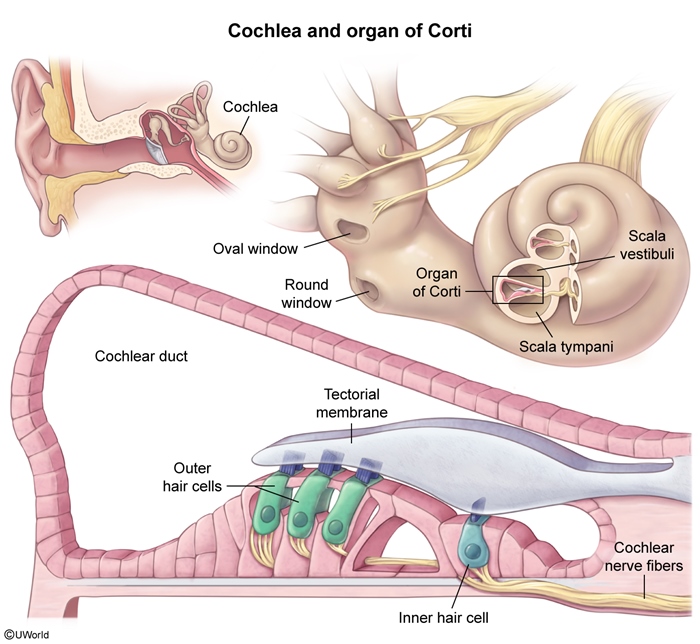Presbycusis
Article Sections
Introduction
Presbycusis, or age-related hearing loss, is the most common cause of sensorineural hearing impairment in older adults. It results from degenerative changes in the auditory system (eg, cochlea), leading to a gradual, symmetric decline in hearing ability. This can have a significant negative impact on a patient's mental, emotional, and cognitive well-being.
Pathogenesis
Presbycusis results from age-related changes in both the peripheral (cochlear) and central auditory pathways. These changes include cochlear hair cell loss, degeneration of spiral ganglion cells in the vestibulocochlear nerve (CN VIII), and/or age-related brain atrophy, leading to progressive, symmetric sensorineural hearing loss (Figure 1). The loss of high-frequency hearing occurs first, making it more difficult to understand speech, particularly with higher-pitched voices (eg, women, children). Many consonant sounds (eg, "t" and "s") are high frequency, leading patients to report hearing but not understanding others. Patients often have little trouble hearing in quiet environments or during one-on-one conversations but struggle with speech discrimination when there is even a small amount of background noise.
Continue Learning with UWorld
Get the full Presbycusis article plus rich visuals, real-world cases, and in-depth insights from medical experts, all available through the UWorld Medical Library.
Figures

